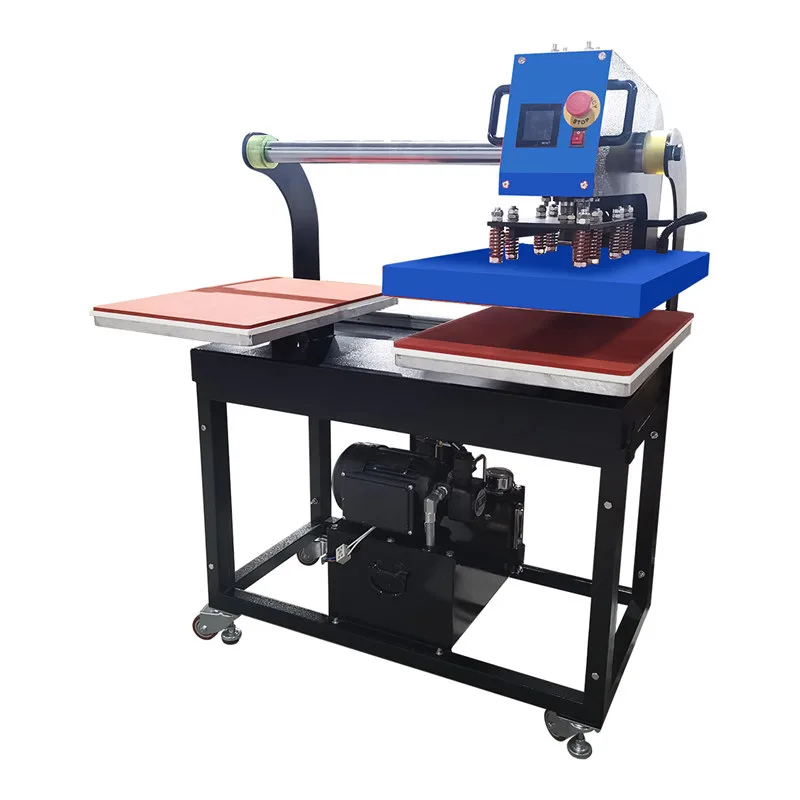Creating professional-quality shirts with a heat press machine requires a combination of technique, preparation, and the right equipment. Whether you’re starting a custom T-shirt business or enhancing your crafting skills, the following tips will help you achieve flawless results every time.
Your material choice makes all the difference in your heat press projects. First, choose shirts made from materials that are friendly to heat transfer, such as cotton, polyester, or poly-cotton blends. The smoother the fabric, the better the transfer adheres, resulting in a clean and vibrant design.
Equally important is the transfer material. For vinyl designs, opt for heat transfer vinyl from reputable brands to ensure durability and color vibrancy. If you’re using sublimation, choose shirts with a high polyester content, as this material allows sublimation inks to bond effectively, creating long-lasting prints.
Preparation is very important to achieve a professional result. Start by pre-washing the shirts to remove any excess chemical content that could be blocking adhesion with the designs. Then, gently press the shirt with a heat press for a few seconds to remove any moisture or wrinkles. This step ensures a smooth surface for the transfer, minimizing the risk of bubbles or uneven application.
When preparing your design for a sublimation print, make sure to mirror your design properly so that it does not print out backward. Carefully place the design on the shirt, using tools such as heat-resistant tape or a T-shirt alignment ruler for proper placement. A properly aligned design can enhance the professional look of the finished product.

Mastering your heat press machine’s settings is key to professional results. Each material/transfer type has its own specific requirements of time, temperature, and pressure, therefore, always refer to the guidelines of the manufacturer for both your machine and the materials in use.
Generally, vinyl transfers do well at medium pressure and in temperatures ranging between 300°F to 350°F for 10-15 seconds. Sublimation transfers mostly need higher temperatures, ranging between 380°F to 400°F, with longer pressing times, usually 30-60 seconds. Poor settings result in badly attached designs, discoloration, or even fabric damage.
Uniform pressure is also important. Most heat press machines, such as Baiyin’s, have the ability to adjust pressure depending on how thick your material is. Make sure the machine applies even pressure across the whole platen to avoid uneven designs.
To protect both your shirt and your heat press machine, always use a protective barrier during the pressing process. Place a sheet of parchment paper, Teflon sheet, or silicone pad between the heating element and the design to prevent scorching, sticking, or ink bleed. These are reusable materials, so they are very economical to add to your setup.
In addition, protective materials are important in undertaking intricate designs or fragile fabrics. They create a buffer for equal heat distribution to ensure the best results.
Do a test run before committing to a full batch of shirts. It allows you to get the settings right or to change them, so you don’t waste materials. The test press enables you to judge the appearance of your print job and other issues like misalignment, insufficient adhesion, and color wash.
Pay close attention to your work during the actual pressing. While many heat press machines have built-in timers and alarms, it’s always best to verify your results directly after the platen is lifted. Look for indications of proper adhesion, such as a smooth surface where the design has bonded with the fabric.
Once the transfer is complete, carefully remove any protective materials and inspect the shirt for imperfections. Allow the shirt to cool before stretching or folding to ensure the design sets properly.
For long-lasting results, advise your customers to wash their shirts inside out in cold water and avoid using harsh detergents or bleaches. It is best to line dry, as the high heat of a dryer can degrade the transfer over time.
Mastering the heat press machine for shirts is an art that takes time and practice. By focusing your attention on material selection, preparation, machine settings, and post-press care, you will be able to create professional-quality results. Whether you’re crafting for personal enjoyment or running a business, these tips will help you create shirts that stand out for their precision, vibrancy, and durability.